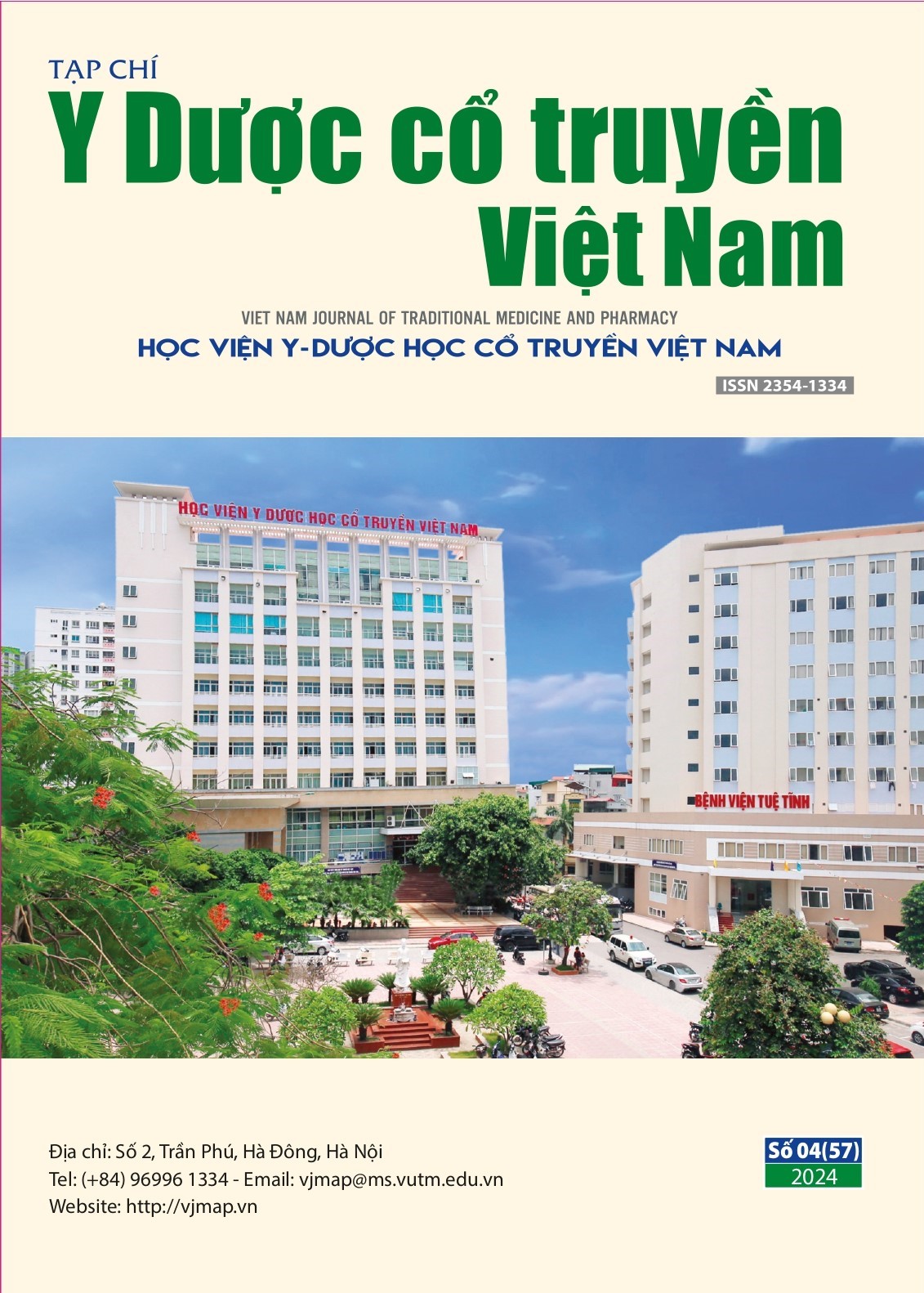Nghiên cứu đặc điểm hình thái và phân tích thành phần tinh dầu của loài ngũ sắc (ageratum conyzoides l.)
Nội dung chính của bài viết
Tóm tắt
Mục tiêu: Xây dựng bộ dữ liệu về đặc điểm hình thái chi tiết và thành phần tinh dầu của loài Ngũ sắc (Ageratum conyzoides) tại một số vùng khác nhau.
Đối tượng và phương pháp nghiên cứu: Đối tượng: Loài Ngũ sắc thu tại một số tỉnh của Việt Nam. Phương pháp nghiên cứu: Phân tích, mô tả, chụp ảnh các đặc điểm hình thái, xác định tên khoa học bằng phương pháp so sánh hình thái đối chiếu; Định lượng tinh dầu tổng số bằng phương pháp cất kéo hơi nước, phân tích thành phần hóa học trong tinh dầu bằng phương pháp GC-MS.
Kết quả: Đã xây dựng bộ dữ liệu về đặc điểm hình thái của loài Ngũ sắc (Ageratum conyzoides) bao gồm mô tả và hình ảnh chi tiết. Hàm lượng tinh dầu tổng số các mẫu từ 0,60 - 0,61%; Chất chính chiếm tỷ lệ cao nhất gồm có β-Caryophyllene (18,53 – 22,54 %), E-β-Famesene (3,0 – 6,18 %), Precocene I (5,48 – 21,16 %), β-Sesquiphellandrene (2,06 – 4,29 %), Precocene II (21,02 – 45,00 %).
Kết luận: Dữ liệu hình thái chi tiết được xây dựng gồm bản mô tả và hình ảnh của loài Ngũ sắc (Ageratum conyzoides). Có sự khác biệt về thành phần hóa học trong tinh dầu các mẫu thuộc loài Ageratum conyzoides thu tại các vùng khác nhau.
Chi tiết bài viết
Từ khóa
Tinh dầu, Ngũ sắc, Ageratum conyzoides, đặc điểm hình thái.
Tài liệu tham khảo
2. Lê Kim Biên và cs. Thực vật chí việt nam – họ Cúc, tập 3, Nhà xuất bản Khoa học kỹ thuật, 2007, tr.106-109.
3. Bộ Y tế - Hội đồng dược điển Việt Nam. Dược điển Việt Nam V, Nhà xuất bản Y học, 2017, Tập 2, tr.1113-1115.
4. Viện Dược liệu. Danh lục cây thuốc Việt Nam, Nhà xuất bản Khoa học kỹ thuật, 2016.
5. Le Pham Tan Quoc. Physicochemical Properties and Antibacterial Activity of Essential Oil of Ageratum conyzoides L. Leaves. Agric. conspec. sci., 2020, 85:2, pp.139-144.
6. Bi Koffi François P. Kouame, Daouda Toure, Landry Kablan, Gustave Bedi, Illa Tea, Richard Robins, Jean Claude Chalchat, Felix Tonzibo. Chemical Constituents and Antibacterial Activity of Essential Oils from Flowers and Stems of Ageratum conyzoides from Ivory Coast. Rec. Nat. Prod, 2018, 12:2, pp.160-168.
7. Carla Janaina Rebouças Marques do Rosário, Cláudia Quintino da Rocha, Daniel Moura de Aguiar, Cristian Alex Aquino Lima, Daniella Patrícia Brandão Silveira, José Antônio Costa Leite, Denise Fernandes Coutinho, Ferdinan Almeida Melo. Anti-Ehrlichia properties of the essential oil of Ageratum conyzoides L. and its interaction with doxycycline. AMB Expr., 2019, 9, pp.58.
8. Olonisakin Adebisi, Shudh Kirti Dolma, Praveen Kumar Verma, Bikram Singh, SG Eswara Reddy. Volatile, nonvolatile composition and biological activities of Ageratum houstonianum Mill. against diamondback moth, Plutella xylostella (L.) and aphid. Aphis craccivora Koch. Indian Journal of Experimental Biology, 2019, 57, pp.908-915.
9. Wu, Z. Y., Raven, P. H. & Hong, D. Y., eds., Flora of China Volume 20-21 (Asteraceae), Science Press (Beijing) & Missouri Botanical Garden Press (St. Louis), 2011, pp. 879-883.

